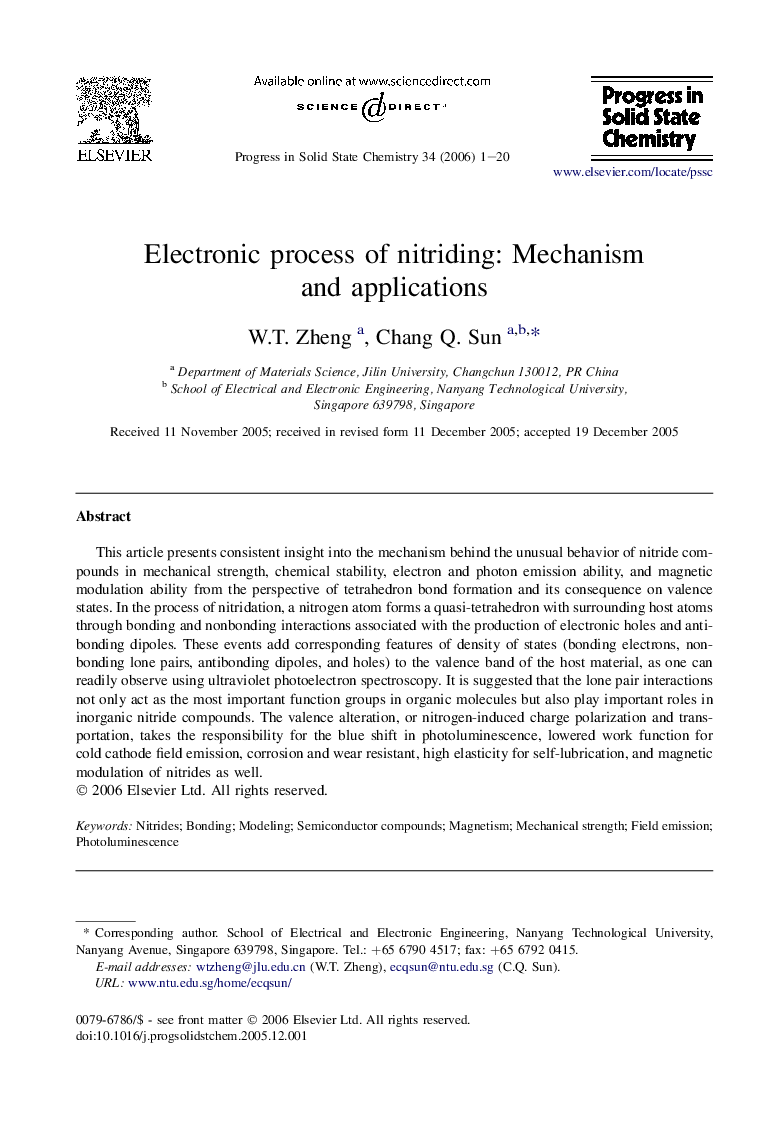| Article ID | Journal | Published Year | Pages | File Type |
|---|---|---|---|---|
| 1497898 | Progress in Solid State Chemistry | 2006 | 20 Pages |
This article presents consistent insight into the mechanism behind the unusual behavior of nitride compounds in mechanical strength, chemical stability, electron and photon emission ability, and magnetic modulation ability from the perspective of tetrahedron bond formation and its consequence on valence states. In the process of nitridation, a nitrogen atom forms a quasi-tetrahedron with surrounding host atoms through bonding and nonbonding interactions associated with the production of electronic holes and antibonding dipoles. These events add corresponding features of density of states (bonding electrons, nonbonding lone pairs, antibonding dipoles, and holes) to the valence band of the host material, as one can readily observe using ultraviolet photoelectron spectroscopy. It is suggested that the lone pair interactions not only act as the most important function groups in organic molecules but also play important roles in inorganic nitride compounds. The valence alteration, or nitrogen-induced charge polarization and transportation, takes the responsibility for the blue shift in photoluminescence, lowered work function for cold cathode field emission, corrosion and wear resistant, high elasticity for self-lubrication, and magnetic modulation of nitrides as well.
